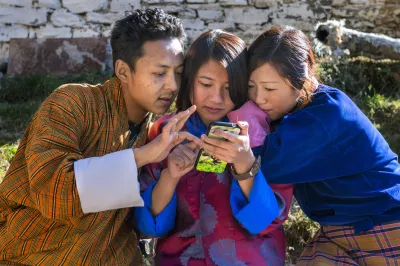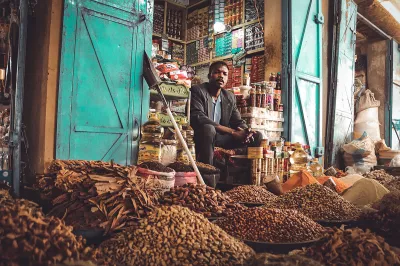Women in Rural and Agricultural Livelihoods Facing COVID-19
Women in rural and agricultural livelihoods have been disproportionately impacted by COVID-19. Immediate interventions have been crucial to support their daily needs, but it’s never too early for service providers, funders, policy makers and researchers to anticipate the rebuilding phase and even prepare for the next crisis.
The World Bank Group’s Gender Strategy identifies three pillars of women's empowerment: economic opportunities, endowments and agency. In this post, we look at how COVID-19 is affecting women in rural areas under each of these pillars and then offer recommendations for how funders can support their recovery after COVID-19.

Economic opportunities
The economic opportunities of women in rural and agricultural livelihoods have been impacted by their increased care responsibilities, disruptions in local markets and agricultural processors and the growing importance of digital channels.
- The more vulnerable subgroups face disproportionately negative impacts from COVID-19, which highlights the need for service providers to design services for the distinct profiles within larger livelihood groups. A first step is recognizing the three key segments of smallholder households: subsisting, commercializing and diversifying. From there, it is important to consider further distinctions by women’s life stage and prevailing social norms to understand and address the economic consequences of COVID-19.
- Women have increased care responsibilities. Children are home from school, the seasonal migrations of other family members have been disrupted and when family members are sick, social norms direct the primary care-giving responsibilities to women. As a result, women have less time for agricultural activities, whether they feed the family or generate income.
- The local markets and processors critical to women in rural and agricultural livelihoods are disrupted. Women often generate income and exchange information, including about health issues like COVID-19, in meeting places that are now shut down. Women are disproportionately involved in sorting and packing across cash crop value chains, where social distancing is not possible. When local markets and agricultural processors are closed or changed to cope with the pandemic, women’s income from agricultural production, processing and other kinds of informal employment is greatly reduced.
- Digital channels for information and sales have grown more important, but women are less likely than men to use them. In Africa last year, women represented only 25 percent of registered users of digital agriculture solutions, despite their high participation throughout the agricultural sector. There is an acceleration toward digitally driven livelihoods, but women are on the margins and may see their agricultural production and sales decline.
Endowments
The endowments of women in rural areas, particularly in education and health, are threatened by COVID-19. This has negative downstream effects on women’s livelihoods.
- Fewer girls may return to school. Girls in rural areas have taken on increased burdens of care and struggle to access distance learning during school closures; rural households facing financial challenges may deprioritize the cost of girls’ education or steer girls into child marriage. Since every additional year of primary school increases girls' eventual wages by 10-20 percent and encourages them to marry later and have fewer children, restricting their access to education compromises their livelihood prospects, increases the likelihood that they will live in poverty and risks intergenerational impacts.
- Health care resources are diverted to COVID-19. While understandable, this shift in resources strains the ongoing provision of basic maternal, child and reproductive health care services, particularly in already underserved rural areas, which may lead to increases in both maternal mortality and teenage pregnancies. In Sierra Leone during the Ebola outbreak, lack of access to reproductive health care services caused at least as many deaths as Ebola, and the teenage pregnancy rate increased 65 percent in some parts of the country. Women and children are also at greater risk for nutritional deficiencies during crises. All of this limits women’s basic ability to generate income and protect their living standards.
Agency
Women’s ability to make decisions about their own lives is also undermined by contextual enablers affected by COVID-19.
- Many savings groups have been forced to modify or stop operations. For women in rural areas, community savings and credit groups play an important role as sources of information, networking and financial mechanisms that offer a place to save and to receive regular payouts. But as groups suspend operations, payouts have stopped, and women’s income from agricultural activities, remittances and other casual work has plummeted. Whatever agency and household decision-making power these income streams afford women may also now erode.
- Gender-based violence and child marriage have increased due to economic and household stress combined with social distancing. Though more rural women experience domestic violence than urban women, few seek services. According to World Vision, COVID-19 will make an additional 4 million girls vulnerable to early and forced marriage in the next two years.
What should funders prioritize?
With the varied impacts of COVID-19, gender-aware interventions must strengthen the resilience of women in rural and agricultural livelihoods, both in recovering from COVID-19 and anticipating the next crisis. Here are four recommendations for funder priorities to ensure gains in women’s empowerment are not set back by the COVID-19 crisis.
- Capture data on women in rural and agricultural livelihoods and seek to understand their experiences in order to inform the recovery phase. A large effort to gather data and conduct research on smallholder households is underway in response to COVID-19. These efforts can provide essential guidance on rebuilding resilience – if research questions and methodologies embed the distinct experiences of women and then disaggregate the results by sex.
- Prioritize services women prefer while addressing the social norms they face. Women in rural and agricultural livelihoods are more likely than men to use community-based financial mechanisms and microfinance institutions (MFIs). In fact, 80 percent of MFI clients are women, and 65 percent live in rural areas. Expanding those services entails confronting the prevailing social norms that influence where and how women save their money, take a loan, generate income and generally manage their livelihoods and financial lives.
- Increase women’s access to technology and digital financial services. Women in low- and middle-income countries are 8 percent less likely than men to own a mobile phone and 20 percent less likely to access the internet through a phone, according to GSMA’s Mobile Gender Gap Report 2020. This limits their access to the services, information and markets they need to cope with COVID-19 and find opportunities in digital livelihoods, which calls for targeted solutions.
- Contribute to the longer-term transformation of women’s status and gender roles and improve gender equality to build true resilience. More resilient rural and agricultural livelihoods for women will be possible only by engaging across sectors to address the various dimensions of gender inequality and sustaining efforts to dismantle discriminatory practices and norms. Without this, we risk continued structural subordination of women, and systemic shocks always will impact them more adversely than they do men. Deeper solutions are needed to position women to withstand the next crisis.
Only with a clearer understanding of women in rural and agricultural livelihoods can service providers, policy makers and funders better meet needs of these women, both in the recovery phase and in building resilience before the next crisis.




Add new comment